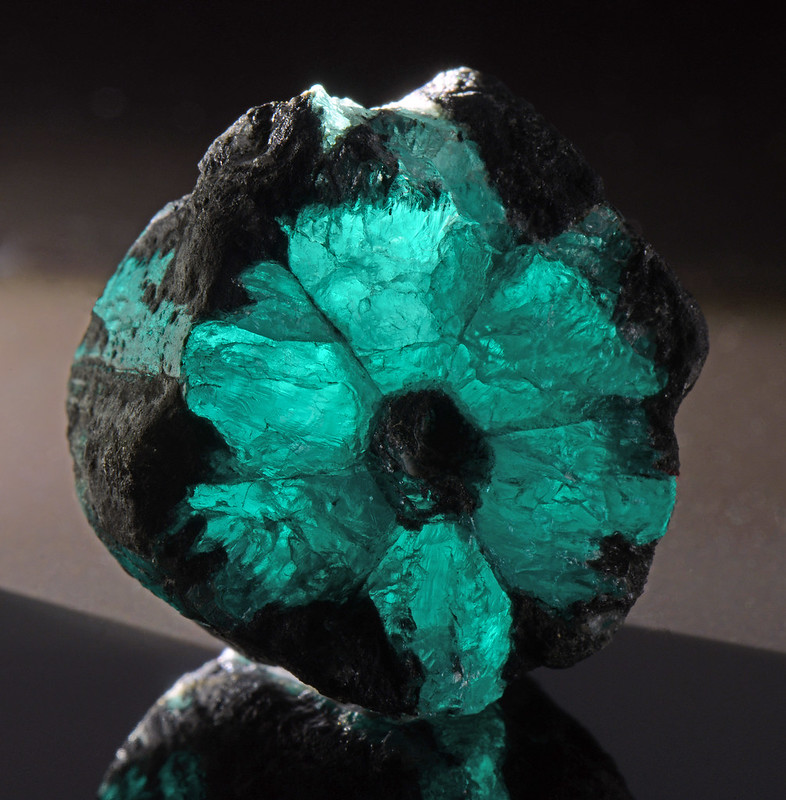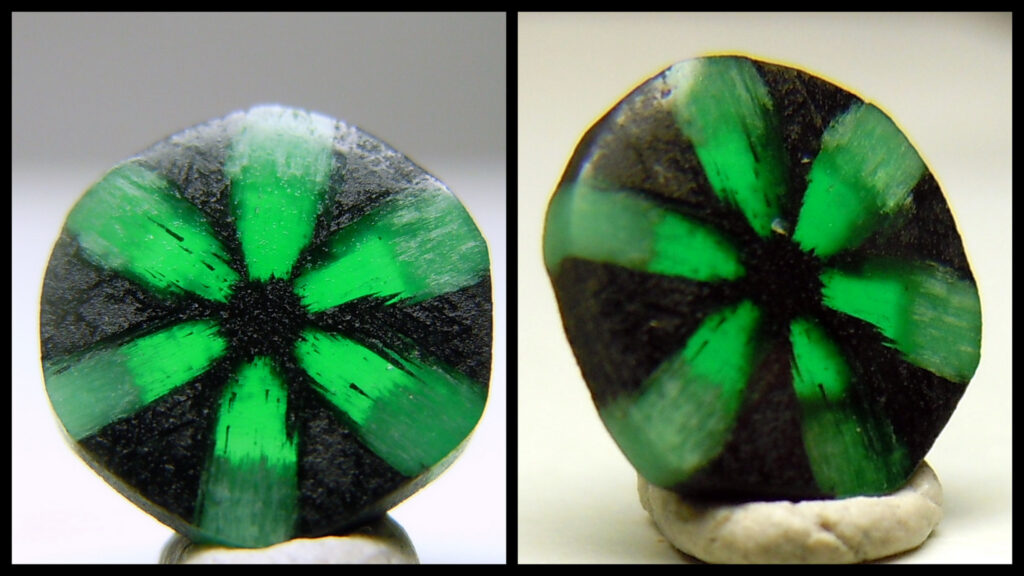
Trapiche emeralds are a rarity in the gem world, coveted by collectors for their unique, star-like pattern. These gems are not your average emeralds; they’re distinguished by their six-spoke wheel appearance, which sets them apart from the more common green stones familiar to most collectors.
The striking pattern of trapiche emeralds are completely natural and are the result of unique geological conditions as well as the presence of certain impurities during the crystal’s formation.
Found primarily in the emerald-rich territories of Colombia, Trapiche emeralds owe their name to the Spanish term for the spoked wheel of a sugar mill, which resembles the distinctive pattern of these stones.

Collectors and enthusiasts around the world are drawn not only to their beauty but also their scarcity. Each Trapiche emerald tells a complex geological tale of growth, interruption, and regrowth, making them as scientifically fascinating as they are visually.
Understanding all there is to know about trapiche emeralds is the first, and most important step for any collector. The interplay of beryllium, chromium, and vanadium in the presence of carbonaceous materials gives rise to one of the worlds most beautiful and intriguing minerals.
Diving into the world of Trapiche emeralds opens a window into the deep intricacies of mineral formation and the remarkable conditions that create them.
The Allure of Trapiche Emeralds
<It only takes one look to fully understand why trapiche emeralds are so highly sought after, with their unique patterns and exceptional clarity.
These remarkable stones feature a distinct six-pointed radial pattern that resembles a star or a snowflake. Formed due to the presence of black carbon impurities during crystallization, the growth of the emerald is influenced by these inclusions, resulting in the iconic pattern that’s not found in any other type of emerald. Each segment is separated by inclusions, often made up of carbon, that converge at the center, creating spoke-like formations.
Color Variations and Clarity
The color of Trapiche emeralds ranges from a deep green to lighter green hues. Clarity in these gemstones is quite unique as the inclusions that create the trapiche pattern are not considered flaws but are essential to its uniqueness, beauty and value.
Trapiche emeralds that exhibit a deeper green hue are typically more popular and sought after by collectors. While the stones with lighter shades of green are more common, they are still valuable.
The Origin and Geology of Trapiche Emeralds
Colombia is renowned for yielding the finest trapiche emeralds, with the most prominent mines located in the western region of Boyacá. These mines include the famous Muzo, Coscuez, and Peñas Blancas, all situated in the Andean mountain range.
Notably, Colombia is not the lone producer; lesser-known trapiche emeralds have also been found in Brazil and Zambia, yet these lack the distinct quality and clarity that are found in Colombian Trapiche varieties.
Mineral Composition
Trapiche emeralds are a variety of the mineral beryl (Be₃Al₂(SiO₃)₆) and contain trace amounts of chromium and vanadium, which impart the characteristic green color. The trapiche pattern is due to the presence of carbonaceous inclusions during the crystal’s growth, radiating from the center to form the hexagonal spokes. Unlike other emeralds, which may be treated to enhance clarity, trapiche emeralds are completely natural and unaltered.
Collecting Trapiche Emeralds
Grading and Evaluating
When grading Trapiche emeralds, there’s a few specific characteristics to consider that determine their quality. These include:
- Clarity: The clearer the emerald, the more valuable it is. Inclusions are common but should not distract from the star pattern.
- Star pattern: A well-defined, symmetrical star pattern is crucial and increases the gemstone’s value.
- Color: Intense green hues are most sought after. Stones with vibrant color command higher prices.
- Size: Larger sizes are rarer and thus more valuable. However, the quality of the star pattern should not be overlooked for size alone.
Current Market and Value
The current market for Trapiche emeralds is a niche market, with collectors and enthusiasts willing to pay premium prices for high-quality specimens. The Gemological Institute of America (GIA) says that the value of a trapiche emerald can range from a few hundred dollars per carat to several thousand dollars per carat depending on the quality and size of the gemstone.
The value of Trapiche emeralds are determined by:
- Rarity and Origin: Colombian Trapiche emeralds are the most prized because of their exceptional quality and rarity.
- Quality of craftsmanship: Well-cut stones that exhibit the characteristic star pattern distinctly fetch higher prices.
Current prices range significantly based on the above factors, but expect to invest a considerable amount for quality pieces.
- Online rock and mineral club for collectors of all levels!
- Find community with like-minded rock and mineral enthusiasts.
- Monthly Giveaways!
- Free Access to Entire Digital Library of Products (annual memberships)


